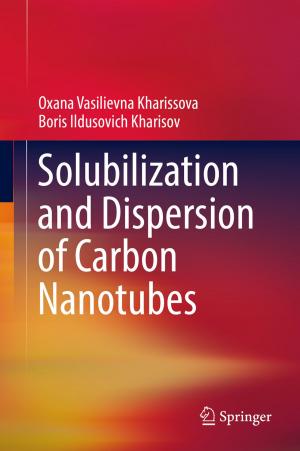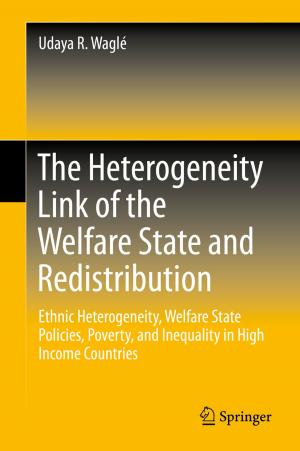Natural Gas Hydrate - Arctic Ocean Deepwater Resource Potential
Nonfiction, Science & Nature, Science, Physics, Energy, Earth Sciences, Geology, Technology| Author: | Michael D. Max, William P. Dillon, Arthur H. Johnson | ISBN: | 9783319025087 |
| Publisher: | Springer International Publishing | Publication: | October 11, 2013 |
| Imprint: | Springer | Language: | English |
| Author: | Michael D. Max, William P. Dillon, Arthur H. Johnson |
| ISBN: | 9783319025087 |
| Publisher: | Springer International Publishing |
| Publication: | October 11, 2013 |
| Imprint: | Springer |
| Language: | English |
The book is an up-to-date basic reference for natural gas hydrate (NGH) in the Arctic Ocean. Geographical, geological, environmental, energy, new technology, and regulatory matters are discussed. The book should be of interest to general readers and scientists and students as well as industry and government agencies concerned with energy and ocean management.
NGH is a solid crystalline material that compresses gas by about a factor of about 164 during crystallization from natural gas (mainly methane) - rich pore waters over time. NGH displaces water and may form large concentrations in sediment pore space. Its formation introduces changes in the geotechnical character of host sediment that allows it to be distinguished by seismic and electric exploration methods. The chemical reaction that forms NGH from gas and water molecules is highly reversible, which allows controlled conversion of the NGH to its constituent gas and water. This can be achieved rapidly by one of a number of processes including heating, depressurization, inhibitor injection, dissolution, and molecular replacement. The produced gas has the potential to make NGH a valuable unconventional natural gas resource, and perhaps the largest on earth.
Estimates for NGH distribution, concentration, economic targets, and volumes in the Arctic Ocean have been carried out by restricting the economic target to deepwater turbidite sands, which are also sediment hosts for more deeply buried conventional hydrocarbon deposits. Resource base estimates are based on NGH petroleum system analysis approach using industry-standard parameters along with analogs from three relatively well known examples (Nankai-Japan, Gulf of Mexico-United States, and Arctic permafrost hydrate). Drilling data has substantiated new geotechnical-level seismic analysis techniques for estimating not just the presence of NGH but prospect volumes.
In addition to a volumetric estimate for NGH having economic potential, a sedimentary depositional model is proposed to aid exploration in the five different regions around the deep central Arctic Ocean basin. Related topics are also discussed. Transport and logistics for NGH may also be applicable for stranded conventional gas and oil deposits. Arising from a discussion of new technology and methodologies that could be applied to developing NGH, suggestions are made for the lowering of exploration and capital expenses that could make NGH competitive on a produced cost basis.
The basis for the extraordinarily low environmental risk for exploration and production of NGH is discussed, especially with respect to the environmentally fragile Arctic region. It is suggested that because of the low environmental risk, special regulations could be written that would provide a framework for very low cost and safe development.
The book is an up-to-date basic reference for natural gas hydrate (NGH) in the Arctic Ocean. Geographical, geological, environmental, energy, new technology, and regulatory matters are discussed. The book should be of interest to general readers and scientists and students as well as industry and government agencies concerned with energy and ocean management.
NGH is a solid crystalline material that compresses gas by about a factor of about 164 during crystallization from natural gas (mainly methane) - rich pore waters over time. NGH displaces water and may form large concentrations in sediment pore space. Its formation introduces changes in the geotechnical character of host sediment that allows it to be distinguished by seismic and electric exploration methods. The chemical reaction that forms NGH from gas and water molecules is highly reversible, which allows controlled conversion of the NGH to its constituent gas and water. This can be achieved rapidly by one of a number of processes including heating, depressurization, inhibitor injection, dissolution, and molecular replacement. The produced gas has the potential to make NGH a valuable unconventional natural gas resource, and perhaps the largest on earth.
Estimates for NGH distribution, concentration, economic targets, and volumes in the Arctic Ocean have been carried out by restricting the economic target to deepwater turbidite sands, which are also sediment hosts for more deeply buried conventional hydrocarbon deposits. Resource base estimates are based on NGH petroleum system analysis approach using industry-standard parameters along with analogs from three relatively well known examples (Nankai-Japan, Gulf of Mexico-United States, and Arctic permafrost hydrate). Drilling data has substantiated new geotechnical-level seismic analysis techniques for estimating not just the presence of NGH but prospect volumes.
In addition to a volumetric estimate for NGH having economic potential, a sedimentary depositional model is proposed to aid exploration in the five different regions around the deep central Arctic Ocean basin. Related topics are also discussed. Transport and logistics for NGH may also be applicable for stranded conventional gas and oil deposits. Arising from a discussion of new technology and methodologies that could be applied to developing NGH, suggestions are made for the lowering of exploration and capital expenses that could make NGH competitive on a produced cost basis.
The basis for the extraordinarily low environmental risk for exploration and production of NGH is discussed, especially with respect to the environmentally fragile Arctic region. It is suggested that because of the low environmental risk, special regulations could be written that would provide a framework for very low cost and safe development.















